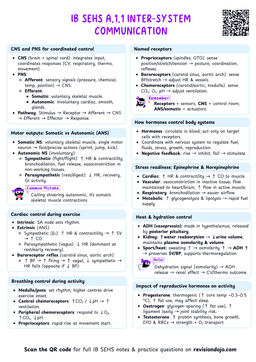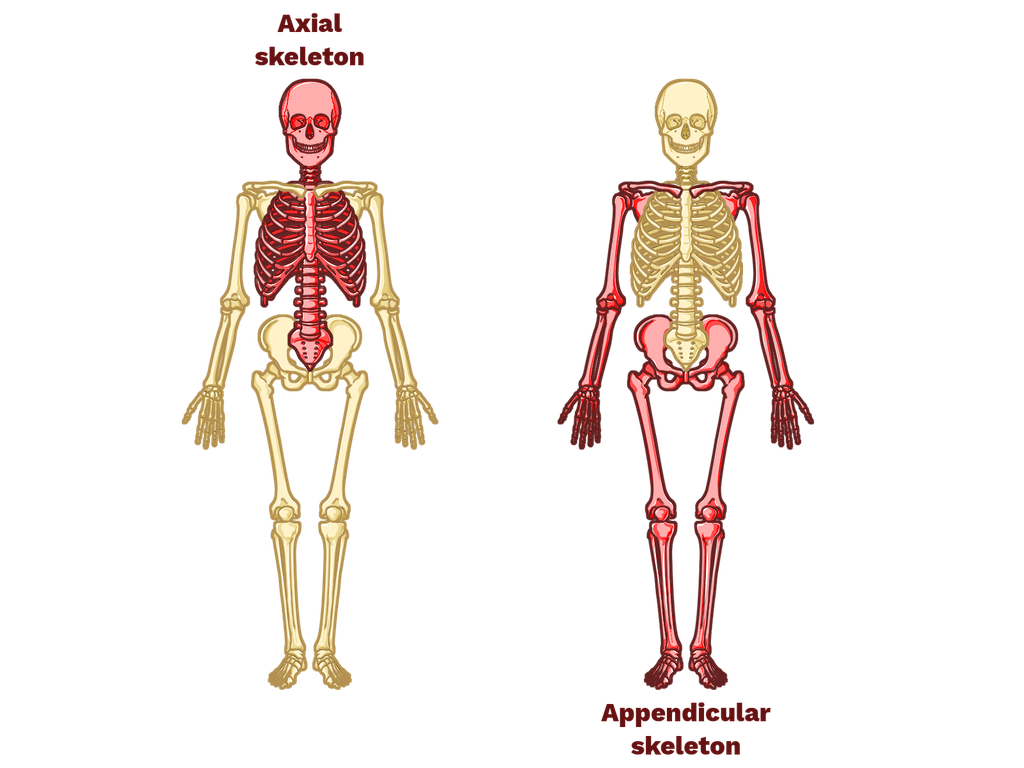The Human Skeleton: Axial and Appendicular Components
- The human body performs a wide range of movements through the coordinated action of bones, joints, and muscles.
- The human skeleton serves as the structural framework of the body, supporting movement, protecting vital organs, and facilitating physiological processes like blood cell production.
- It is divided into two major components:
- Axial Skeleton – Forms the central core of the body.
- Appendicular Skeleton – Comprises the limbs and structures associated with movement.
Axial skeleton
The central core of bones that forms the body's longitudinal axis
Appendicular skeleton
The bones of the limbs and their attachments to the axial skeleton

- Students often confuse which bones belong to which component.
- Remember: if it's part of your arms, legs, or their attachments (shoulder/pelvic girdles), it's appendicular.
- Everything else is axial.
The Axial Skeleton: The Central Framework
The axial skeleton includes 80 bones, divided into three major regions:
- Skull (Cranium & Facial Bones)
- Protects the brain and supports the facial structures.
- Includes cranial bones (frontal, parietal, temporal, occipital) and facial bones (maxilla, mandible, zygomatic).
- Vertebral Column (Spine)
- Provides structural support and flexibility.
- Consists of 33 vertebrae divided into five regions:
- Cervical (7): Supports the head and allows movement.
- Thoracic (12): Attaches to ribs, providing thoracic cage support.
- Lumbar (5): Bears most of the body's weight.
- Sacrum (5 fused): Connects the spine to the pelvis.
- Coccyx (4 fused): Forms the tailbone.
- Thoracic Cage (Rib Cage & Sternum)
- 12 pairs of ribs protect the heart and lungs.
- Sternum (breastbone) connects to ribs via cartilage, providing flexibility.
The axial skeleton is primarily responsible for protection and postural stability, unlike the appendicular skeleton, which focuses on movement.
AnalogyThink of the axial skeleton as the frame of a house, providing the central structure and stability for everything else to be attached.

The axial skeleton accounts for about 40%of your body's height.
Primary Functions of the Axial Skeleton
- Protection: Shields vital organs like the brain, heart, and lungs.
- Support and Posture: Provides a stable framework for the body.
- Attachment for Muscles: Serves as a base for muscles involved in breathing and maintaining posture.
In a basketball player's jump shot:
- The vertebral column maintains stability
- The rib cage expands for increased breathing
- The skull stays level for targeting
Appendicular Skeleton
The appendicular skeleton consists of 126 bones that facilitate movement and allow interaction with the environment. Major Components of the Appendicular Skeleton:
- Pectoral (Shoulder) Girdle
- Composed of clavicle (collarbone) and scapula (shoulder blade).



